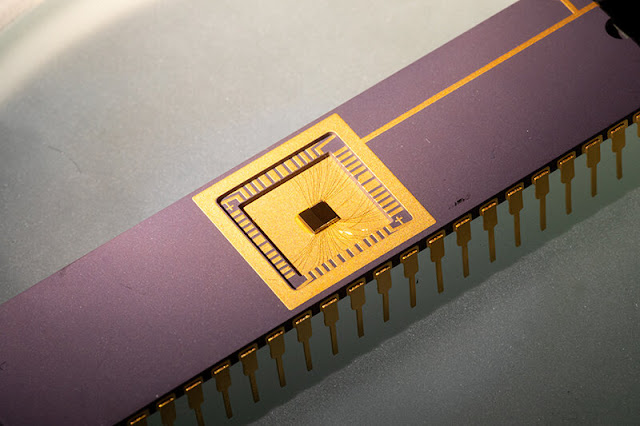US physicists have created a fuelless generator based on Graphene
Graphene and Free Energy
Physicists from the University of Arkansas have developed a graphene-based circuit that can convert its thermal oscillations into an electric current, thereby disproving the claims of two famous scientists in the past. This was reported on October 2 by the scientific Internet journal Phys.org.
Graphene is a nanomaterial made of carbon, whose atoms are arranged in a two-dimensional crystal lattice. That is, the material is a sheet one atom thick.
 |
| Silicon crystals inside microchips |
The theory of graphene's behavior under the influence of Brownian motion (thermal chaos) emerged from Paul Tibada and his team three years ago. Now scientists have been able to prove it. The theory says that under the influence of thermal motion in the environment, the graphene sheet will be cyclically deformed. Using these oscillations, a high-frequency alternating current is obtained in the circuit.
The idea of extracting energy from graphene is controversial because it disproves physicist Richard Feynman's famous assertion that the thermal motion of an atom, known as Brownian motion, cannot do useful work, i.e. cannot absorb heat from the environment. Chibado's team found that at room temperature, the thermal motion of the graphene actually induces an alternating current in the circuit, which was thought to be impossible.
Also in the 1950s, physicist Leon Brillouin published a paper refuting the idea that adding a single diode (that is, creating a DC electric shutter based on it) in a circuit is a solution to the problem of obtaining energy from Brownian motion. Even so, Chibado's team built their circuit with two diodes to convert AC to DC. The diodes in their circuit are opposed to each other, allowing current to flow in both directions in different ways through the circuit. The circuit acts like a full-wave rectifier, generating an pulsating DC current through a pull-up resistor.
In addition, they found that their circuit increased the amount of energy absorbed by the graphene, while the resistance of the diodes would have to dissipate the received energy. “We also discovered that the switch-like behavior of the diodes does in fact increase the collected power rather than decrease it as previously thought,” Chibado said.
“To demonstrate this increase in strength, we relied on the newly emerged field of stochastic thermodynamics and expanded upon the nearly century-old famous Nyquist theory (Nyquist-Mikhailova - author's note). ” co-author Pradeep Kumar, assistant professor of physics. According to Kumar, graphene and the circuit create a common resonant circuit. Even though thermal motion operates on the load resistor, the graphene and the load are at the same temperature, and no heat is transferred between them!
This is an important point, Tibado says, because the temperature difference between the graphene and the load in the power-producing circuit would go against the second law of thermodynamics. "This means that the second law of thermodynamics is not violated and there is no need to prove that 'Maxwell's demon' separates hot and cold electrons," - Tibado said.
“People might think that the current in the resistor is causing it to heat up, but the Brownian current is not. In fact, if no current is flowing, the resistor will cool down,” explains Tibado. - "Everything we did was redirect the current in the circuit and turn it into something useful".
The team's next task was to determine if such current could be stored in a capacitor.
If the circuit was scaled down so that millions of such circuits could be accommodated on a square, millimeter-sized die, a low-capacity battery could be created. “Graphene-based energy harvesting circuits can be integrated in a chip to provide clean, unlimited, low-voltage power to small devices or sensors,” said Paul Tibado.
The truth about free energy
Free energy was introduced by Tesla more than 100 years ago. However, this technology is proprietary to generators: Free Energy Generator
The use of electronic circuits to generate free energy is called transient overvoltage radiated energy: Impulse Technology
That's what's best about free energy. If you do not believe in free energy, it is possible to use fuel combustion technology: AC generator - rare earth permanent magnet: low torque, low RPM, Three phase four wire for home, 20KW
 Reviewed by CGD TAO
on
December 28, 2021
Rating:
Reviewed by CGD TAO
on
December 28, 2021
Rating:

No comments: